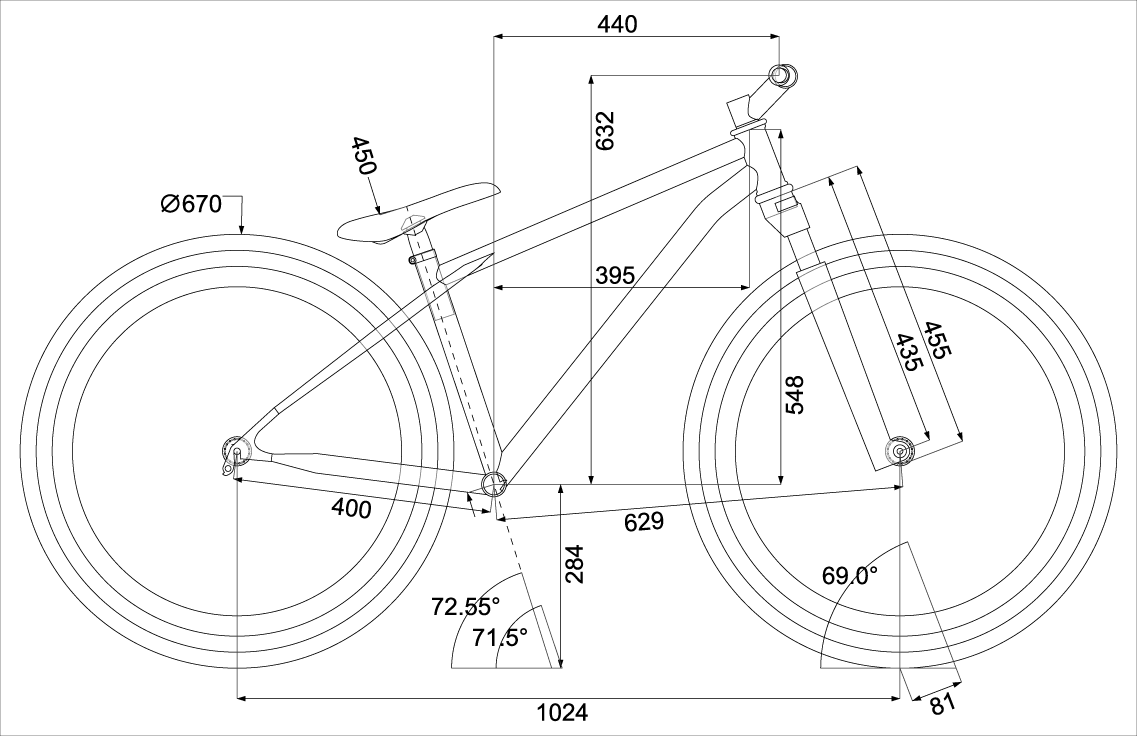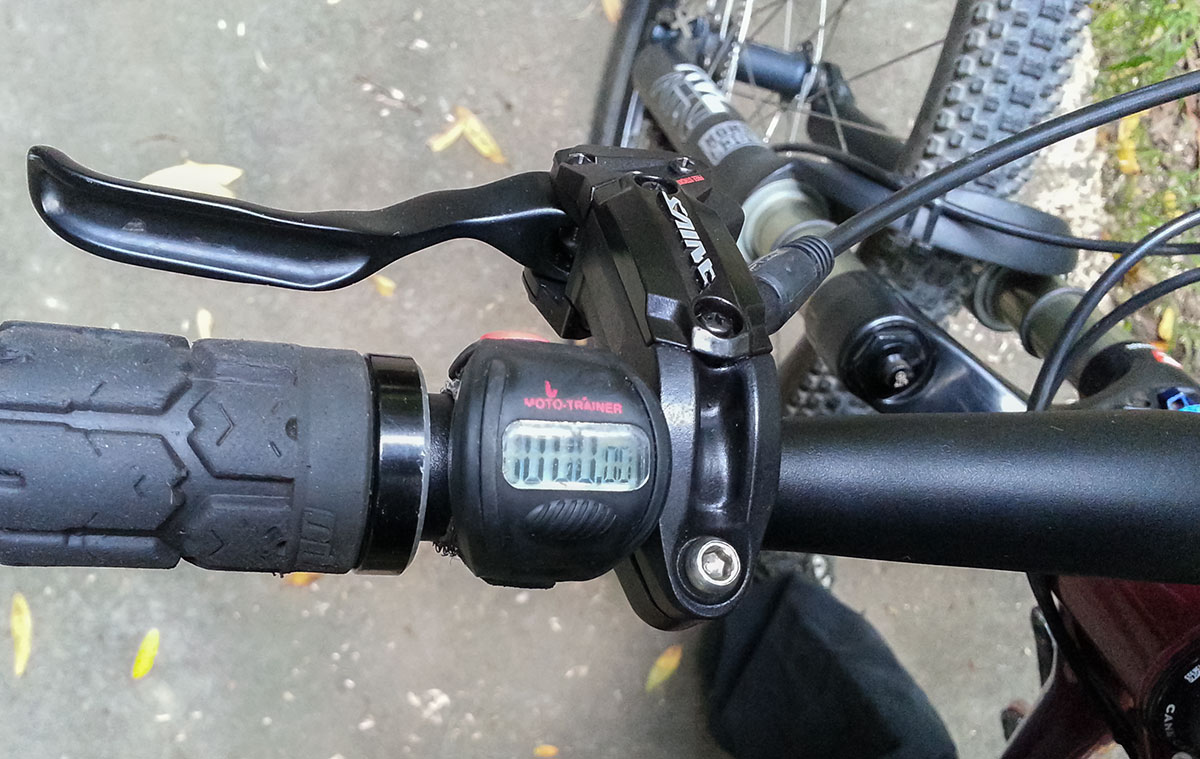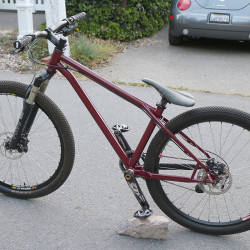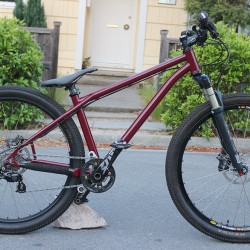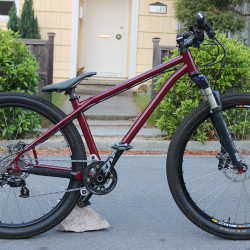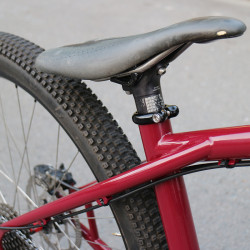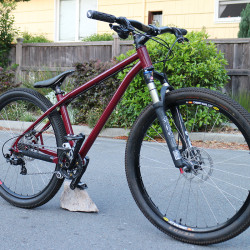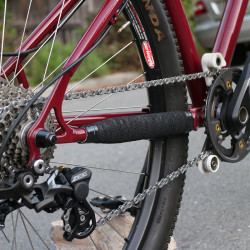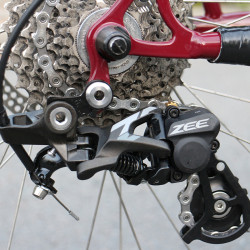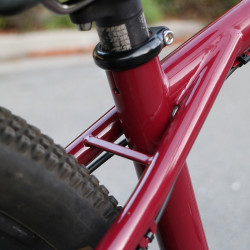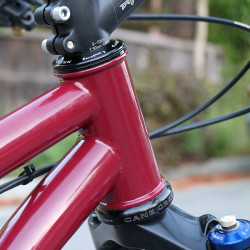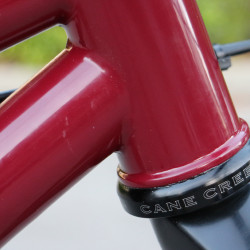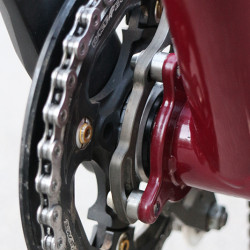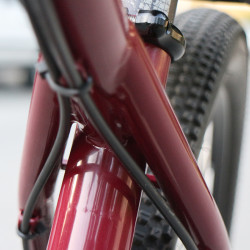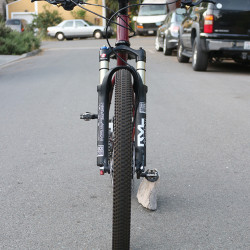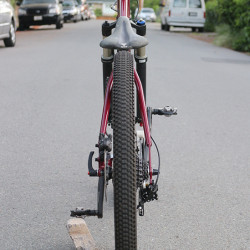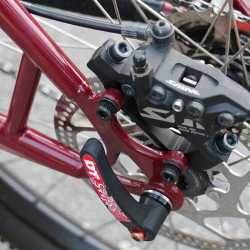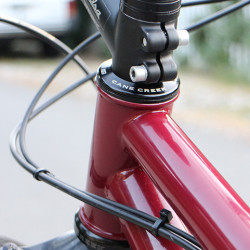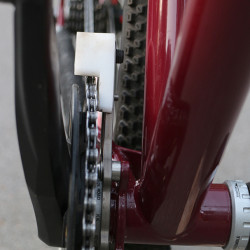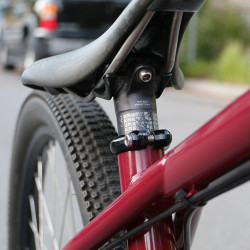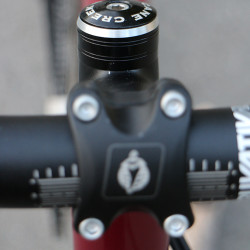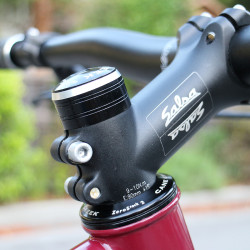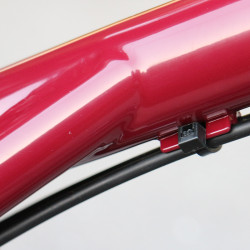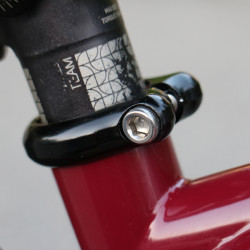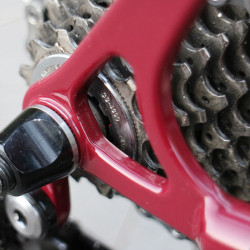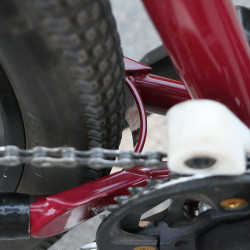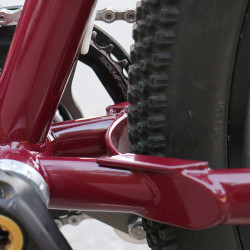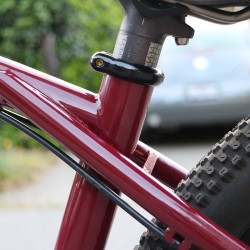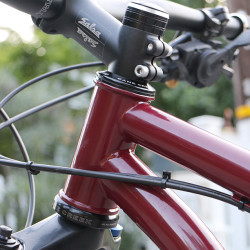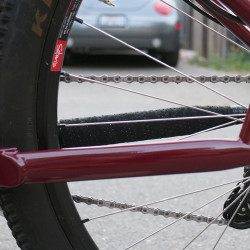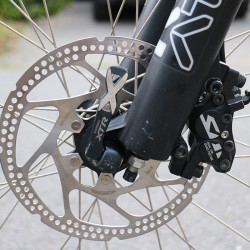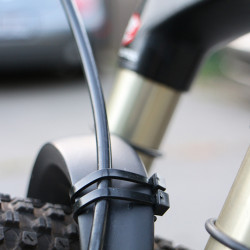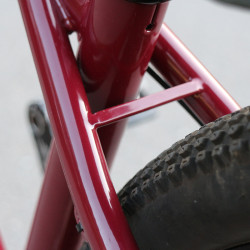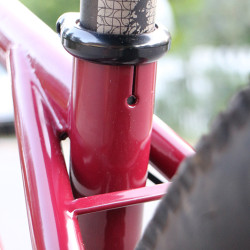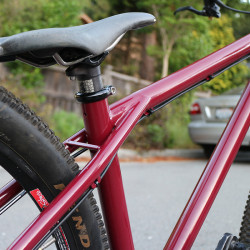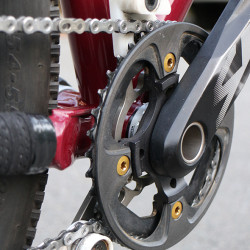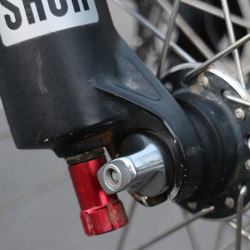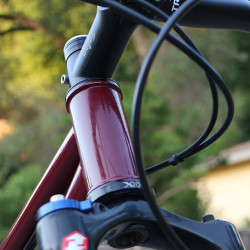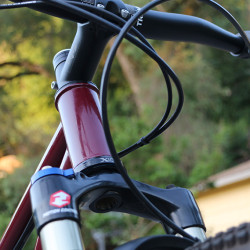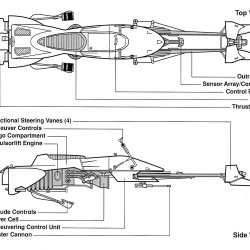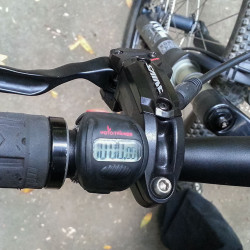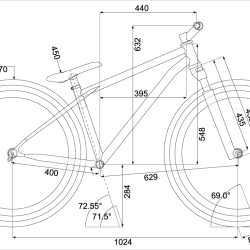A lot of work was done this past winter let primarily by Davey Simon, Jim Jacobson and a few other main players and a ton of volunteers. The result is the Endor Flow Trail in Camp Tamarancho, BSA. So much work was done on this trail by so many volunteers that I’d have a hard time describing it well. Suffice to say, the results speak for themselves. It’s an amazing success. Thousands of runs have gone down the trail daily right after opening. It’s probably one of the most talked about and hyped thing to happen in the Bay Area mountain bike world in quite a while. Many people are stoked on it.
Here‘s some footage of the trail and an example of video timing in Ronen’s KOM (2:40) run down Endor.
To ride this trail and have a really good time, there is just one thing you really need to do; slam your saddle. It is unreal how few people are capable of making this choice. You really need as much room for your body to flow with the trail. After that, you can flip your stem or swap out to a tiny 60mm -30 degree stem. You want your handlebars quite low and set back. Simple stuff that anybody can do in 2 minutes for when taking a few runs.
Many of us locals have determined that it’s best to do a dedicated ride for flow rather than tying it into real mountain bike rides. This means you ride out on a special bike, ride the flow, then ride back with very little messing around on either end. On normal mountain rides, just forget the flow and ride down Broken Dam if you are over there. Broken Dam is and has always been very fun going down. It’s about making sense of things. This way you can ride the right bike in the right place at the right time. Simple.
The instant question was, “What’s the exact right bike?” Obviously, a hardtail. 80-100mm of fork travel or maybe none at all? Single speed or geared? Dropper or dedicated low post? The general consensus has been a dirt jump type bike. I felt differently. Dirtjump bikes tend to have very high bottom brackets. I figured something extra low was the way to go so I built a test mule to find out. It’s a purpose built bike for riding flow trail and pump track. It’s a no compromise purpose built bike. It’s a lousy mountain bike but insanely good in the flow. The bike is short, low, and badass.
Compare this bike to the Yeti DJ which has a half a degree steeper head angle (@80) but a near 30mm higher bottom bracket. @100 it’s a 35mm difference in height. That’s an entirely different bike. Another comparison is a special build, the Specialized ‘Stumppumper’, which was just a stock P3 with a low fork and an offset bb. The head angle on that thing was probably ridiculously steep. It used a 445mm rigid fork, 10mm longer than my 80@20. Also, the P3 is head angle is 70.5@470mm. That means the head is in the 72 degree range. The stock P3 has a bb height of 324mm with a 100mm fork. Yuck.
The namesake for the bike is the 74-Z Speeder made by the Aratech Repulsor Company. A fun little craft that many of us wish we could play with. A small force of 74-Z speeders were used by Imperial forces on the moon of Endor (SW VI).
Suspension:
I had an old 2006 RS Revelation 409 (130mm, dual-air, QR9). I lowered it internally to 80mm. It was cheap and solid enough for this application. I have room in the frame for a tapered fork but that would be a wasteful purchase at this point. I also would have preferred a QR15 fork, but again, this setup is more than adequate for this bike and my skill. A bit of fork flex was felt while riding the trail with this fork. It’s noticeable. Stiffer would be better, but not heavier. Also, 60mm of travel might be good for this trail. 80mm is plenty. Next time.
Service note: Right leg top 115cc/5wt, Left leg top 6cc/15wt, Right and Left bottom 15cc/15wt.
Brakes:
Typically, on hardtail 26″ I’ll use 180F/140R rotors, FS 26″ I’ll use 180F/160R rotors, and on 26″ DH 203F/180R rotors. On this bike, some de-tuning of the front brake and increase in rear is in order – 160F/160R. You don’t want to grab too much front by mistake and you want to have a little bit to work with in the rear. I had some fancy Shimano Saint brakes so I used them for the hype. Truly, lighter XT brakes would be a better choice as braking isn’t what’s making you fast on this trail. Still, the 160/160 setup feels just right on the trail.
Tires:
Traction on a smooth hard surface is in order. Some old Kenda Small Block Eight 2.1″ UST tires I had in stash were mounted. If I were buying new tires, I’d probably be looking at the Continental Race King tires. Regardless, I had no issue with the SBE tires and they were indeed fast.
Gearing:
I knew that a decently tall gear was needed for the trail as there are a few pedal strokes to keep maximum speed in some sections but since you still need to get up the hill for each run, some range makes the day fun. A single Race Face 36t chainring and 12-30 Tiagra cassette produce the range. The Tiagra cassette is heavy but I had it, Ultegra is much lighter. Shifting is done with an SLX DH Shadow+ short cage derailleur and SLX 10-spd shifter make things tight and solid. This gear choice was just perfect.
Handlebars:
For Marin trail, I’ve found that 700mm is about as wide as possible if you ride where I do (tight trees on trail). Since this trail is fairly clear and the bike is dedicated, I tried a 780mm Truvativ Boo Bar, 20mm rise. In riding the trail, though, 780mm was very do-able, but worrying in the tree sections. This would require the bars getting cut down a bit. The problem with the Boo Bar is that there really isn’t much room to do that and still have proper room for control and grip. 770mm may be as narrow as I’ll be able to get them.
The bars were replaced with Race Face Atlas Flat bars (785mm) cut down to 750mm. This and a stem swap (Salsa 90×25) resulted in perfection.
Body Position:
Body position on a bike like this is odd. There is so much dynamic sucking up and pushing into the trail that you need a low bar but not too far back for traction. Traction and for aft weight bias are critical. Pedaling ergonomics aren’t very important. Keeping the bike out of the way over the wild surface is most important. This fit shown is as close to perfect that I’ve been able to get.
Cranks
The one hard compromise on this bike was crank length. Some 170mm cranks and a 5mm lower bb would have been the dream. 165mm is just too short for the amount of climbing that needs to be done to get to the top of the trail. I had a few 175mm doner cranks that I could use and it would have been wasteful not to. Another time. The Saint cranks are far too heavy here as well, but if you are going to pimp, pimp large.
Fabrication Notes:
The fabrication quality isn’t my best. It was a rush job and I was again exploring some different building techniques. I’m looking for new ideas and testing things I don’t quite believe in. I’m starting to get stoked on triple triangles again. I might use this more in the future. The yoke is a mess. I keep putting off a really good idea that I have, possibly on the next bike. I guess I’m just going through an experimental phase and quality in construction isn’t the most important factor right now.
Ride Report:
I got out on Saturday (5/4) and did 8 runs down Endor. Really just 7 at full race speed and one lallygagging at the end. I prefer to do runs in full race mode as it keeps me in pain and at the limit. Riding here is really great muscle training for DH. Up and down. It’s going to give me some power and stamina that is needed for long days riding chairlift.
Getting out to the trail and back sucked. The low, pulled back handlebars combined with the slammed low post meant that I was strained just to get along. Not being able to sit just sucks and hurts really bad. The bars aren’t so low that you can’t ride, but you have to be very much on guard in rocks and over sharp bumps. The hyper low bottom bracket delivered a dragging or bashing pedal when going over any rocky or rutted area. This all isn’t such a bad thing as this bike was designed as a very specialized vehicle.
Once on the Endor flow trail, this bike was utterly scary. Scary in a great and fantastic way, like getting out of a fire truck and into a Ferrari. The bike was just so fast and responsive. It wasn’t until the 3rd run that I was actually pushing the bike and really riding it rather than just holding the f$#k on. Everything was right about it. I had brought two stems and another set of handlebars with me to the session to swap out to fine tune the riding position. I ended up making no adjustments to that at all and I was reall thinking about what I could do for improvement. The only thing I had to do was rotate the bars slightly to aim the sweep more appropriately but this is expected in any fresh build.
I would like narrow the bars slightly for a little more space going through the tree sections. The SRAM Boo Bars will only allow about 20mm to be cut off the 780mm width and still have something close to good lever position. I’m thinking about this. I wish they had given a little more space to work with. Looking for other handlebar options.
The 80mm suspension was more than enough. I figure I could do 60mm of travel on the trail and not notice much difference. The straight 1-1/8″ steerer QR9 fork did feel a little more flexy than the current tapered QR15 forks that have become standard. It’s funny what you notice when you take a leap backward. Switching to that type of fork would be the only change I’d make if money were no object. Nothing heavy, just a tapered QR15 REBA/REVALATION @80.
The gearing choice I made was just right, again. 36-12/30. It was just enough gear to get up the hill with some effort and gave me a few usable gears when I got up to speed on the trail while keeping everything tight and solid. There are a couple of sections on the trail where those few pedal strokes can really make a difference if you’re looking for a fast run.
Since I was using a lot of parts that I had on my singlespeed, the setup on this bike is nice, but not just what I’d like. A nice Stan’s Flow EX rim up front would be better than the narrow Mavic 819 UST rim that’s on there. Getting a little more tire on the ground would be good for this bike. Regardless, the Small Block Eight tires worked very well givent the dry, slippery conditions. They rolled super fast and didn’t give up grip in any unexpected way.
Of course, since we will see in my next post, a real stopwatch is needed on the bike as GPS does not work where the Endor Flow trail is located.


![74Zspeederbike_schem[1]](http://www.peterverdone.com/wp-content/uploads/2013/05/74Zspeederbike_schem1-934x782.jpg)
